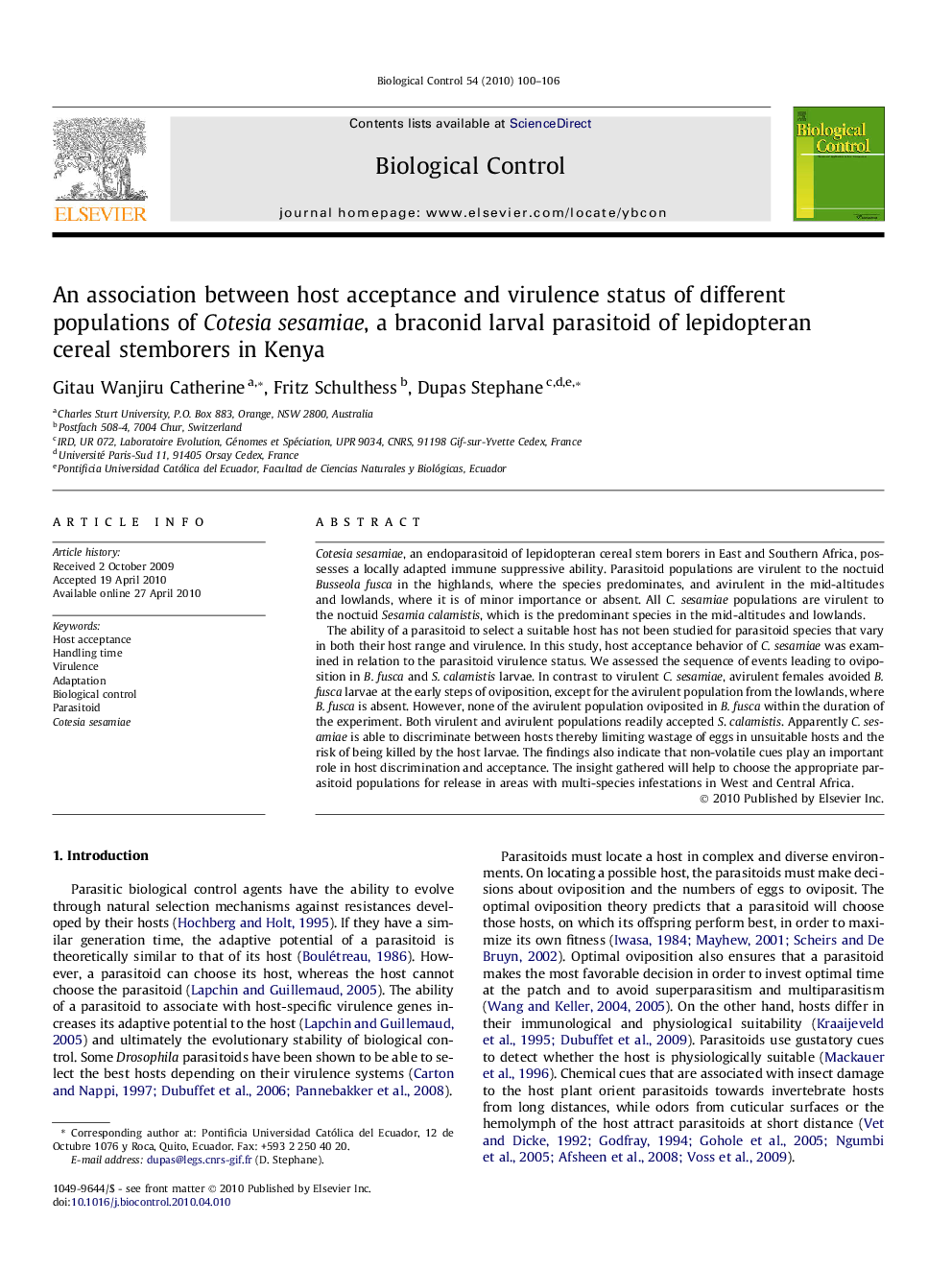| Article ID | Journal | Published Year | Pages | File Type |
|---|---|---|---|---|
| 4504348 | Biological Control | 2010 | 7 Pages |
Abstract
The ability of a parasitoid to select a suitable host has not been studied for parasitoid species that vary in both their host range and virulence. In this study, host acceptance behavior of C. sesamiae was examined in relation to the parasitoid virulence status. We assessed the sequence of events leading to oviposition in B. fusca and S. calamistis larvae. In contrast to virulent C. sesamiae, avirulent females avoided B. fusca larvae at the early steps of oviposition, except for the avirulent population from the lowlands, where B. fusca is absent. However, none of the avirulent population oviposited in B. fusca within the duration of the experiment. Both virulent and avirulent populations readily accepted S. calamistis. Apparently C. sesamiae is able to discriminate between hosts thereby limiting wastage of eggs in unsuitable hosts and the risk of being killed by the host larvae. The findings also indicate that non-volatile cues play an important role in host discrimination and acceptance. The insight gathered will help to choose the appropriate parasitoid populations for release in areas with multi-species infestations in West and Central Africa.
Keywords
Related Topics
Life Sciences
Agricultural and Biological Sciences
Agronomy and Crop Science
Authors
Gitau Wanjiru Catherine, Fritz Schulthess, Dupas Stephane,
